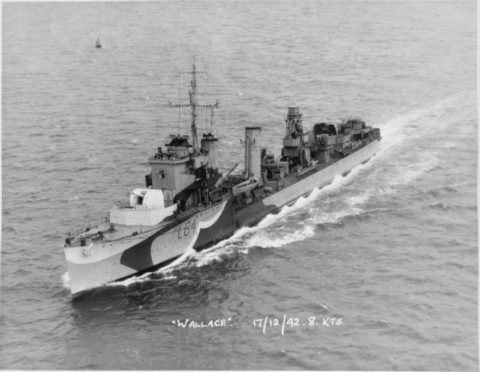Sad, but not unexpected news this morning as His Royal Highness Prince Philip has died. Along with all of his many earthly titles and awards, he was considered divine by villagers in Vanuatu. Janet Davison reports for the CBC:

HRH Prince Philip was the Colonel-in-Chief of the Royal Canadian Regiment. In April 2013, he presented the Regimental Colours to the 3rd Battalion.
Photo by Jamie McCaffrey via Wikimedia Commons.
Prince Philip, the Duke of Edinburgh and husband of Queen Elizabeth, died today at 99. He was the longest-serving royal consort in British history.
His death, announced by Buckingham Palace, came more than three-and-a-half years after Philip formally stepped back from public life, a retreat that had been happening gradually for several years.
In an interview in June 2011 with the BBC, the no-nonsense Philip spoke about “winding down” and reducing his workload as a member of the Royal Family.
“I reckon I’ve done my bit so I want to enjoy myself a bit now, with less responsibility, less frantic rushing about, less preparation, less trying to think of something to say,” he said.
His final official public engagement came on Aug, 2, 2017, when he attended a parade of Royal Marines at Buckingham Palace and met servicemen who had taken part in a charity race.
Prime Minister Justin Trudeau issued a statement Friday calling Philip “a man of great service to others” who maintained a special relationship with the Canadian Armed Forces and was a patron to more than 40 Canadian organizations.
“Prince Philip was a man of great purpose and conviction, who was motivated by a sense of duty to others,” he said. “He will be fondly remembered as a constant in the life of our Queen – a lifelong companion who was always at her side offering unfailing support as she carried out her duties.”
Through the Queen’s 69 years on the throne, the man whom she had called her “strength and stay” carried out more than 22,000 solo engagements and made nearly 5,500 speeches. He attended events periodically with the Queen and other members of the Royal Family after stepping back from official duties.
Update: Colby Cosh recounts a story about Prince Philip’s WW2 naval career that I’d never heard before:
Socially he was entitled to the style of “royal highness” in his own right, yet he was looked down on by mere aristocrats, and even commoners, who had superior public-school credentials and polish. Marriage to a princess might have been impossible if Philip hadn’t impressed George VI personally. As a junior officer he was well-liked, but strict about shipboard order and neatness. He was said to have a natural intuition for command. If he wanted something done, his word put everything in motion at once.
The Royal Navy destroyer HMS Wallace in December, 1942.
Imperial War Museum photo FL 10546 of collection 8308-29 via Wikimedia Commons.He performed well throughout the war, but his finest moment as an officer was not common knowledge until Harry Hargreaves, a Royal Navy yeoman who ended up in Westport, Ont., published a memoir of his own service in 1999. Hargreaves served with Philip aboard HMS Wallace, an old “flotilla leader” ship that had been finished in 1919 and modified for speed. Its original shore-bombardment hardware was pulled in favour of anti-aircraft guns and submarine-killing equipment.
Wallace’s and the prince’s great moment came in July 1943 when the ship was assigned to escort Convoy KMF18 from the Algerian harbour of Bône to the beaches of Sicily. As it happens, this convoy carried the First Canadian Division, which Mackenzie King had lobbied to put in action for the first large-scale amphibious invasion of occupied Europe. Wallace was to ward off U-boats on the trans-Mediterranean journey and then protect the landing party from German air attacks.
On the evening of July 8, Wallace was spotted on a clear, bright night and attacked by flights of Stuka dive-bombers. One damaging near-miss, Hargreaves wrote, had everybody prepared to die when the Stukas came back. Philip, the ship’s first lieutenant, quickly cooked up a plan to build a raft and set it afloat with smoke floats attached, hoping it would look enough like the wreckage of a destroyed ship to distract the returning planes.
“It had been marvellously quick thinking,” Hargreaves said, “conveyed to a willing team and put into action as if rehearsed.” But it required Wallace to steam away from the decoy and await its fate in silence and darkness. When the Stukas came back into earshot, the yeoman “screwed up (his) shoulders in anticipation of the bombs.”
The Germans took the bait and attacked the decoy. “Prince Philip,” Hargreaves concluded, “saved our lives that night.” He also saved the ship, which went on to cover the British-Canadian landing near Pachino.
Having survived the scrape, the prince was alive and intact to attend the Royal Family’s Christmas pantomime at Windsor Castle. Princess Elizabeth’s governess, Marion Crawford, found that combat had turned a “bumptious boy” into a “grave and charming man.” But the princess’s already longstanding crush on her distant cousin had not flagged, and never would.




